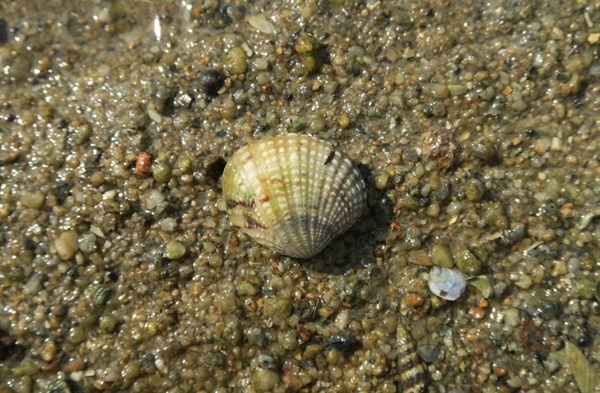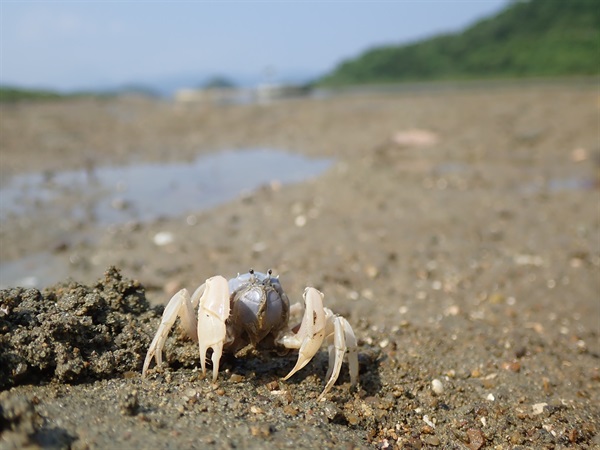Wave action decreases noticeably from outer to inner coast. The more sheltered the shore, the more fine sediments can be deposited. This leads to the formation of a spectrum of soft shores, ranging from sandy shores to mudflats.
Similar to the organisms living in other intertidal habitats, the composition and abundance of soft-shore organisms vary with respect to the degree of wave exposure (i.e. shore types) and the duration of submersion (i.e. shore levels). Soft shores are a three-dimensional habitat, where organisms live not only on the surface but also inside the substratum. Regardless of where organisms live, they have to face a set of challenges. Living on the shore surface allows organisms to search for food or mates easily, but they also face a higher risk of water loss and heat stress during low tides. These organisms are also more susceptible to wave dislodgement and predation during high tides. In contrast, organisms living within the substratum are less susceptible to wave action, predation and desiccation, but they may struggle to obtain food and oxygen for survival, as well as find mates for reproduction.
Soft shore organisms can be categorised into three groups by their ways of habitation: surface dwellers (epifauna), burrowers (infauna) and temporary burrowers. The surface dwellers are mostly snails, whereas the burrowers are mostly bivalves and worms. The temporary burrowers, which act as either surface dwellers or burrowers, depending on the phase of tidal cycle, are mainly crabs capable of digging burrows.
In Hong Kong, mudflats are mostly located in Deep Bay and Inner Tolo, whereas the soft shores with coarser sediments (e.g. sandy shores) are scattered all over Hong Kong. A number of soft shores in Hong Kong are key nursery grounds and shelters for ecologically or commercially important species, including many species of global conservation concern (e.g. Black-faced Spoonbill, Green Turtle and horseshoe crabs).
.jpg)






